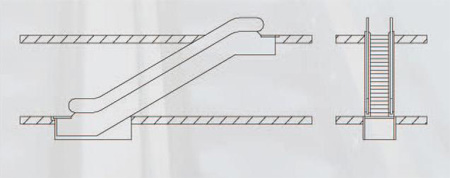 |
|
Single unit:
The single unit sued to link two levels. It is suitable for
buildings with passenger traffic flowing mainly in one
direction. Flexible adjustment to traffic flow (e.g. up in
the morning and down in the evening) is possible |
| |
|
|
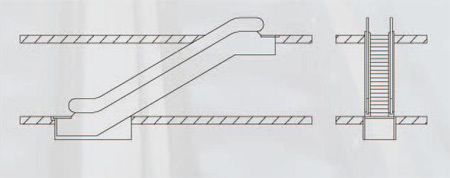 |
|
Continuous arrangement. (one-way traffic)
The arrangement is used mainly is smaller department
stores to link three safes levels. It requires more space
than the interrupted arrangement. |
| |
|
|
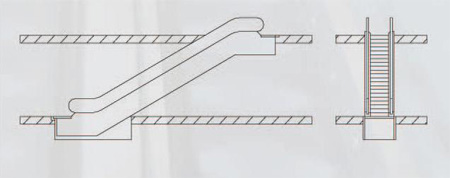 |
|
Interrupted arrangement (one-way traffic)
The arrangement is somewhat inconvenient for users, but
advantageous for department store owners, since the
short detour to the next unit and the spatial separation
between up and down travel is ideal for leading
customers part strategically placed advertising displays. |
| |
|
|
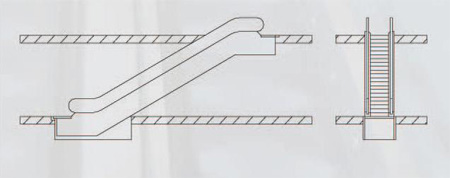 |
|
Interrupted arrangement (one-way traffic)
The arrangement is used mainly in department stores
and public transport buildings with a heavy traffic volume,
when there are three or more escalators, it should be
possible to reverse the traveling direction according to
the traffic flow, This arrangement is economical, since no
inner lateral claddings are required. |
| |
|
|
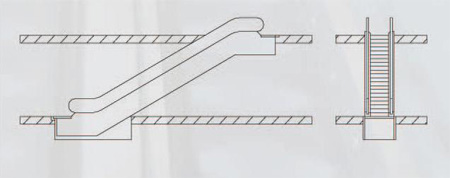 |
|
Crisscross, continuous arrangement (two-way traffic)
This arrangement is used mainly in major department
stores, public buildings and public transport buildings
where transport times between several levels should be
kept to a minimum. |
| |
|
|
| |
|
|
| |
|
|


